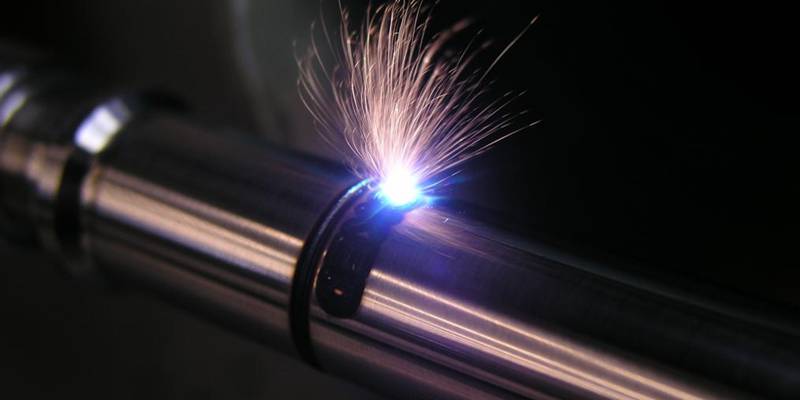- October 21, 2022
Laser marking is a set of marking techniques known for its permanent markings and wide material compatibility. Due to its reliability, efficiency, and productivity, many industries prefer it to traditional marking systems such as manual engraving, stamping, and screen printing.
Manufacturers can use the marking laser system to create permanent markings in the form of texts, codes, graphics, and numbers on parts and machines without surface damage. This article discusses everything you need to know about laser marking systems and their application in part and product manufacturing.
What is Laser Marking?
Laser marking is a set of non-contact marking techniques used in making permanent marks on the part surface. The marking system is non-contact as it uses a laser beam generated by a laser marking machine.
The laser marking process depends on the laser technology you are using. Nevertheless, each laser technology can produce permanent marks on many materials.
How Does Laser Marking Work?
Understanding how the laser marking process works is only possible by understanding a laser marking machine and its generation of the laser beam responsible for the marking.
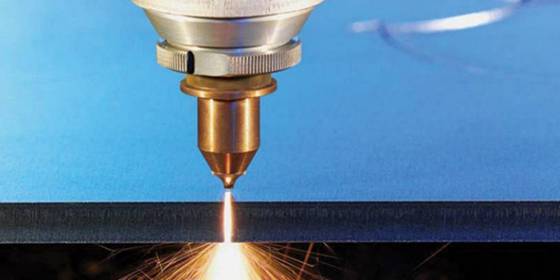
Step 1: Generation of the Laser Beam
The generation of the laser beam in any laser marking equipment depends on three important components:
● The lasing medium is responsible for the wave position and the excitation energy required by the machine. Common lasing mediums include neodymium-doped yttrium aluminum garnet (solid) and organic dyes (liquid), and CO2 (gas). The lasing medium can also be a geometric shape, such as the fiber lasers.
● The pump source is responsible for introducing energy to the laser marking machine, which excites the lasing medium and leads to photons’ emission through spontaneous or stimulated emission.
● The optical resonator has a reflective (high reflector) and partially reflective (output coupler) mirror. It functions in reflecting the light produced by the lasing medium. It can also contain other things, such as a modulator and q-switch, that can change the generated laser beam properties.
Energy becomes introduced into the lasing medium. This leads to the excitation of the lasing medium atoms and the emission of photons. The light enters the optical resonator and undergoes total internal reflection to create the laser beam. The laser can then be passed to components such as the q-switch, lenses, beam expanders, etc., to shape the beam before releasing it.
Step 2: Marking
When the laser beam touches the workpiece’s surface, the heat energy produced causes a change in the features and attributes of the material. The types of change depend on the laser technology you choose. A permanent mark is then left on the surface of the workpiece.
Why Choose Laser Marking in Part Manufacturing?
The laser marking process is preferred over other marking methods, such as dot peening and inkjet marking. Below are a few reasons you should choose laser marking systems.
High Speed
Using a laser, you can easily create different designs and patterns on the material within a short period. This is unlike the traditional marking, where speed depends on the operator. As a result, they are slower and, thereby, more time-consuming. Furthermore, due to their speed, part production is more efficient.
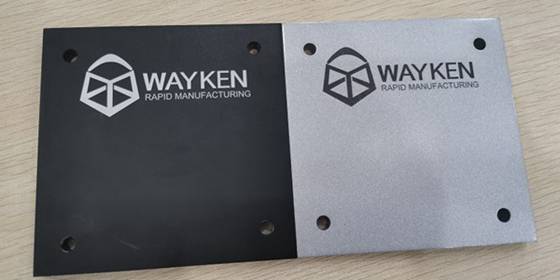
Permanent Markings
Like the dot peening marking system, laser marking technologies create durable marking in harsh conditions such as chemicals. As a result, part manufacturing industries such as the automobile and aviation favor its use due to the permanent marking. Permanent and durable markings allow these manufacturers to track and identify their products irrespective of the point of use.
Non-contact Process
The process is non-contact. As a result, there is no alteration in the material’s physical properties. Furthermore, being non-contact makes laser technology popular in the manufacturing and manufacturing industries.
Environmentally Friendly
Laser marking systems do not use consumables such as chemicals compared to inkjet marking. As a result, there is a lesser chance of ejection of harmful materials into the environment. Furthermore, unlike dot peening, laser technology does not produce noise, making them eco-friendly.
Common Types of Laser Marking Techniques
There are several laser marking systems applicable in part manufacturing processes. Each has its mechanism for using the laser. For example, laser engraving removes parts of a material. Hence, it is applicable in logo or character processing. The three most common laser marking types include:
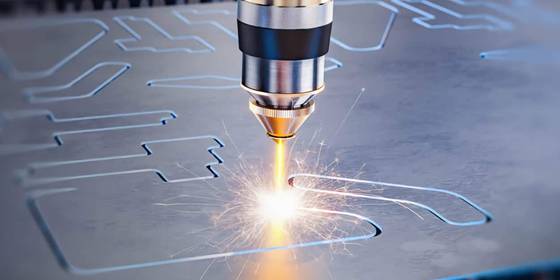
Laser Engraving
Laser engraving is the most common marking method in part manufacturing and prototyping, suitable for working on materials like metals, ceramics, and plastics. Like any laser marking method, it delivers permanent marking, although it has less clarity than others on the list.
Laser engraving is a subtractive process, i.e., it involves using the laser beam to remove part of the material surface. The laser beam focusing on the surface turns the removed material into plasma or vapor removed by the fume extractor. On removal, it leaves an engraved marking that is easily felt by the fingers.
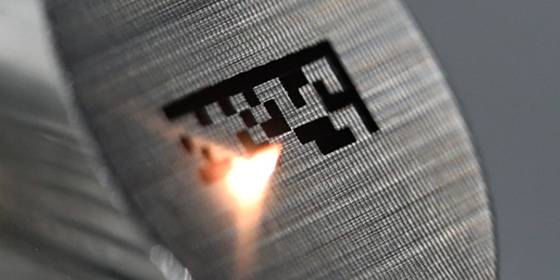
Laser Etching
Laser etching is another marking method for making permanent marks on a workpiece. It commonly applies to metals such as etching aluminum, steel, stainless steel, lead, etc. The laser marking machine etches the workpiece by releasing pulsed laser beams on the workpiece surface. On hitting the surface, the material absorbs the beam and converts it to heat to melt the surface and raises it.
The laser-etched surface requires less energy as it does not have depth, unlike laser engraving. Furthermore, they are more visible. For example, laser-etched aluminum will be more visible than laser-engraved aluminum.
Laser Annealing
Laser annealing is a non-subtractive process commonly used for products with important dimensional accuracy. It involves using laser beams to slowly heat and cool metal surfaces to modify their color (yellow, red, or green) depending on the temperature of the metal’s surface.
The laser annealing process is not suitable for non-ferrous metals and aluminum because their colors are not affected by the influence of heat and oxide.
Types of Lasers Marking Machines
There are many lasers, but we will discuss the four most common ones used for marking production parts.

CO₂ Laser Markers
CO₂ laser markers use CO₂ as the lasing medium and the most suitable marking system for organic materials (they are also suitable for metals after treating the metal with a special marking agent, which gives it a permanent, high contrast mark).
They have the longest wavelength (10600nm) of all laser marking systems, which makes them useful in marking different materials as required by different industries. Furthermore, they also provide faster marking speeds when working with thick materials, especially in sheet metal laser cutting.
Although they are better suited for industrial applications, CO₂ lasers have a high maintenance cost and energy consumption. Furthermore, they are slower than others.

Fiber Laser Markers
Fiber laser markers are a newer, simpler, and more versatile marking system that uses high-tech fiber optics as a lasing medium. They are suitable for marking non-organic materials like metal, steel, aluminum, etc.
The fiber laser marking system has high marking speeds and consumes less energy. Furthermore, they require low maintenance. However, they are unsuitable for marking thick materials.

Green Laser Markers
Green laser markers have a high wavelength (532nm). They are suitable for marking highly reflective and sensitive materials like PCB boards, soft plastics, etc. In addition, they create highly precise markings on workpieces and can absorb different types of materials.

MOPA laser markers
Master Oscillator Power Amplifier (MOPA) lasers are applicable in creating black markings on high-quality metals and plastics. They use a master oscillator to generate the beam, and the power amplifier increases the output power level.
Normally, the pulse duration of laser markers is not adjustable. However, for MOPA lasers, the pulse duration and pulse energy are adjustable. As a result, they are very flexible.
Other Direct Part Marking Processes in Machining
There are other marking techniques with wide industrial applications. The three most common marking techniques include:
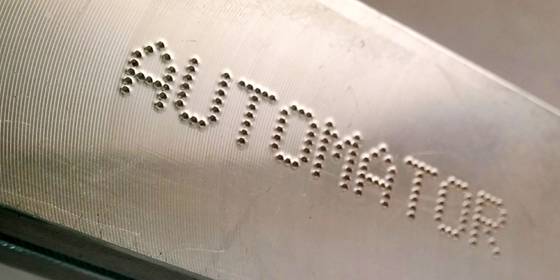
Dot Peening
The dot peening marking system uses a carbide or tungsten carbide pin to create deep and permanent markings pneumatically or electrically. Unlike laser markers, dot peen doesn’t create thermal shocks on the material’s surface. However, they are only suitable for durable parts due to their mechanical force.
Inkjet Marking
Inkjet is a non-contact process that involves using ink to mark a part. There are two types of inkjet marking: thermal and chemical.
-Thermal inkjets have print heads that use heat to transfer the ink to the material’s surface. They are applicable for marking sensitive parts such as food packs and medical devices.
-Chemical inkjets are more complex and use unique inks and paper to print on a wider range of materials like glass, metals, and plastics.
Chemical Etching
This subtractive process involves using chemical sprays to remove materials from the surface of the workpiece to create a permanent engraved mark on metals.
It works by printing a design or logo onto a photoresist, exposing it to UV light, and then placing the laminated design on the metal’s surface. The exposed part becomes etched when you expose the setup to an etching solution such as ferric chloride.
Meet Your Different Laser Marking Needs at WayKen
For permanent marking on machined parts, you need laser marking systems. This article showed some basic knowledge about the marking system. However, it is very important to collaborate with experts who can provide top-notch laser marking services.
Do you have parts that require laser marking? WayKen is here to help you. With 20 years of machining experience and advanced technologies, we can meet all your needs for part marking and you can be sure to get the desired marking style and effect.
In addition, WayKen offers one-stop machining services such as CNC machining, 3d printing, rapid tooling, etc. Simply upload your CAD files and we can offer excellent results on your projects with a fast lead time and competitive price.
Conclusion
Laser marking is the best and most widely used marking process to create permanent, high-quality, and clear marks on different materials. They are easy to use and preferable to the old traditional marking methods. This article talks about the process and how they are the most effective options for different industries.
FAQs
Which materials can be marked with a laser?
Laser markers can create permanent marks on most metals, plastics, ceramics, glass, rubber, and silicon. They can also engrave on rare gems like rubies, diamonds, and sapphires.
What are the applications of laser marking?
Laser marking has a wide industrial application in traceability and part identification. Manufacturers can use a laser marker to apply expiry dates, bar codes, manufacturing dates, and logos on products. As a result, laser marking technologies are used in the food, medical, aerospace, automobile, and electronic industries.
Does the marking wear off?
No, it doesn’t. Laser markings leave permanent marks on the surface of the material. However, on rare occasions, under severe conditions, the marks can wear away when the material’s surface is removed.

